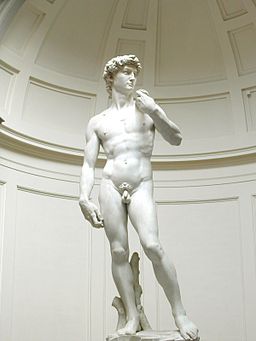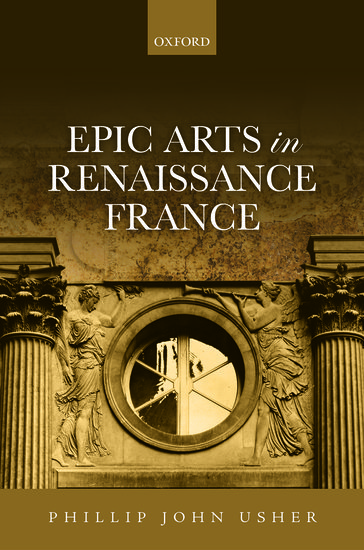By Phillip John Usher
British comedian Eddie Izzard — known for his Francophilia and for performing standup in French and in France — once made a quip during a show in New York that at first seemed rather Franco-sceptic: why, he asked, do we talk about the “Renaissance” using a word of French origin when France itself had no such moment of Re-birth? He called out to the audience, asking if anyone knew the equivalent Italian term. Someone called back “Rinascimento” and it was proclaimed on stage in lower Manhattan that, henceforth, the Italian term should be used in general parlance. If we put to one side the fact that France obviously did have a Renaissance (whatever we mean by that) and the various academic debates about periodization or about whether the term, invented in the nineteenth century, might be anachronistic or ideologically overburdened, we might acknowledge that the British comedian had a point. Or at least that his comment is symptomatic of what we mean when we say “Renaissance.” Say the word to someone and, if that person doesn’t think of Shakespeare or the Showtime’s Tudors, he or she will probably call to mind a certain painting by Da Vinci, a sculpture by Raphael, or a recent trip to the Uffizi Gallery. Ask that person to name a French artist from the same period and there will likely — and not surprisingly — be silence.
France’s first art historians (the likes of André Félibien and Alexandre Lenoir) seemingly operated from, while denying, a similar intuition — and consequently, in a nationalistic vein, they sought to fabricate the myth of a “French Michelangelo” in the person of Jean Cousin the Elder, whose only known painting, Eva Prima Pandora, is at the Louvre, at the heart of an exhibition organized by Dominique Cordellier and Cécile Scailliérez. Outside of such exhibitions, I would be willing to bet money that it is not one of the most looked at works in the collection. It is, for sure, a beautiful painting. In a somber grotto, which opens out in the background onto ancient ruins, a cityscape, and a garden, a woman reclines amidst luxuriant foliage on a fine piece of fabric that also wraps around and between her legs. A snake is wrapped around her arm and she holds in her right hand an apple-tree branch — she is thus Eve. But there are also two vases — she is also Pandora. The painting is both Christian and Pagan; it is at once mournful and wary (see the skull on which she leans, see the antique ruins in the background) and yet full of hope (the vases are upright and Pandora, as art historians have shown, is not a wholly negative figure). The painting is, moreover, reminiscent of Titian’s Venus of Urbino (again, the Uffizi!), except that there is no rose, no dog, and no cassoni, all attributes evoking marriage. Moreover, and as Henri Zerner has shown, the painting can be likened to the decorations and celebrations of King Henri II’s royal entry in 1549, in which Paris itself (referred to as “Lutetia”) also became a “new Pandora.” But while Cousin’s painting is both beautiful and worthy of our attention, it has not been enough to make Jean Cousin the Elder the “French Michelangelo.”

It is not difficult to marvel at Michelangelo’s David – nor Cousin’s Eva Prima Pandora, for that matter. And there is no reason to stop doing so. But if we are to change what the word “Renaissance” evokes for most of us, namely the Rinascimento and the (rightly admired) masterpieces of the Italian Renaissance, and especially if the word’s French etymology (from renaître – to be reborn) is to one day seem less jarring vis-à-vis the seeming lack of a French Michelangelo, we could do worse than turn to the extensive dialogue between art and literature in Renaissance France. The Gallery of Psyche — and yes, which indeed had an Italian predecessor at Rome’s Villa Farnesina — is just one point of departure. In fact, if the term Rinascimento brought to mind the amazing loggia of Cupid and Psyche at the Farnesina or Nicolò dell’Abate’s Aeneid gabinetto as frequently as it evoked Michelangelo’s David or the Mona Lisa, things might be quite different. The real distinction to be made is thus perhaps less between a French Renaissance and an Italian Rinascimento than between the search for standalone masterpieces and the realization that so many works of art produced in the early modern period grow from, react to, or even inspire works of literature. If we remember that, then France and Italy stop seeming quite so different and the search for a French Michelangelo all of a sudden seems even more pointless than before. At the same time, new works of art and new ways of reading and viewing all of a sudden come into focus.
Phillip John Usher was born in England. He studied French literature at Royal Holloway College, University of London, before pursuing graduate work in Romance Languages at Harvard University. He is currently Assistant Professor at Barnard College, Columbia University, where he is also Chair of Medieval and Renaissance Studies. He is the author of Epic Arts in Renaissance France.
Subscribe to the OUPblog via email or RSS.
Subscribe to only art and architecture articles on the OUPblog via email or RSS.
Image credit: Michelangelo’s David. By David Gaya (Own work) [CC-BY-SA-3.0], via Wikimedia Commons



Recent Comments
There are currently no comments.